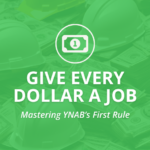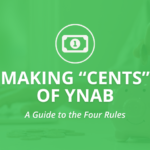Roll With The Punches: Mastering YNAB’s Third Rule
- By Brett Schaffner
- In Budgeting

Life loves curveballs. Just when you think you’ve got your budget on lock, the car breaks down, or a friend invites you to a last-minute getaway. YNAB’s third rule, “Roll with the Punches,” is about staying flexible and adapting your budget as life unfolds. It’s not just about managing your money; it’s about managing change.
Embracing Flexibility
Flexibility in budgeting doesn’t mean you aren’t sticking to your plan—it means you’re responsive to life’s inevitable changes. Drawing inspiration from boxing, YNAB’s third rule, “Roll with the Punches,” teaches us to adapt rather than resist. In boxing, rolling with a punch reduces the impact of the hit, keeping you on your feet and in the fight. Similarly, adjusting your budget as needed helps you handle financial surprises with less stress and keeps you moving toward your priorities. This rule allows you to adjust your budget categories without guilt, ensuring that your financial plan remains relevant and practical, no matter what surprises come your way.
How to Implement This Rule
- Expect to Make Changes: Begin each month knowing that adjustments are likely. This mindset prepares you to adapt rather than react. Adjust values accordingly as the month progresses.
- Adjust with Intention: When you overspend in one category, consciously decide where to pull back. For example, if you splurge on a spontaneous concert ticket, you might decide to dine out less that month or move money from a category that is less of a priority right now.
- Review Regularly: Make it a habit to review your budget daily. This keeps you in tune with your spending and savings, making adjustments less daunting. Checking in for 5-10 minutes each day can save you hours at the end of the month.
Why Flexibility Matters
A rigid budget breaks, but a flexible budget bends and rebounds. By allowing yourself to adjust categories as needed, you prevent small discrepancies from ballooning into big problems. It also reduces the stress and guilt often associated with strict budgeting, making the process more enjoyable and sustainable.
TRY YNAB FREE FOR 34-DAYS
Dealing With Overspending
When overspending happens, treat it as an opportunity to learn about your habits and refine your budget further. Analyze why the overspending occurred: Was it impulsive, necessary, or simply a lack of planning? Each situation provides valuable insights that can help you plan better for future months. With this knowledge, you can add categories, update target amounts, or decide that type of purchase isn’t aligned with your priorities for the future. I personally added an “Education” category because I learned I like taking certification courses and learning about a variety of topics. This saved my “Oops” category and made me feel better about choosing to intentionally invest in furthering my knowledge while spending intentionally on something I enjoy rather than continuing to see it as overspending when it happens because now it is planned.
Rule 3 Is Also Rule 1
While Rule 1 of YNAB helps you assign every dollar a job, Rule 3 allows us to re-assign those jobs. In any business, job tasks can change as priorities shift and new orders come in. Our budget has to be able to do the same, so let’s use our Rule 1 skills of assigning every dollar a job to re-prioritize some of those dollars, sending them to jobs we didn’t initially plan for, but can easily accommodate without guilt and without blowing up our entire budget due to a small change in plans.
Wrapping Up
“Roll with the Punches” isn’t just a rule; it’s a resilience strategy for your finances and your life. By learning to adapt your budget flexibly, you’re not only maintaining control over your finances, you’re mastering the art of financial adaptability. This approach ensures that your budget is always an accurate reflection of your current needs, making it a powerful tool for achieving your long-term financial dreams.
Don't Know How to Roll With the Punches?
If the idea of flexible budgeting feels overwhelming, you’re not alone. As a certified YNAB coach, I’m here to help you navigate the ebbs and flows of personal finance with ease. Reach out today, and let’s work together to set up your budget to handle whatever life throws your way.
- Share:
You may also like

Age Your Money: Mastering YNAB’s Fourth Rule
- September 28, 2024
- by Brett Schaffner
- in Budgeting

Embrace Your True Expenses: Mastering YNAB’s Second Rule

Give Every Dollar a Job: Mastering YNAB’s First Rule


